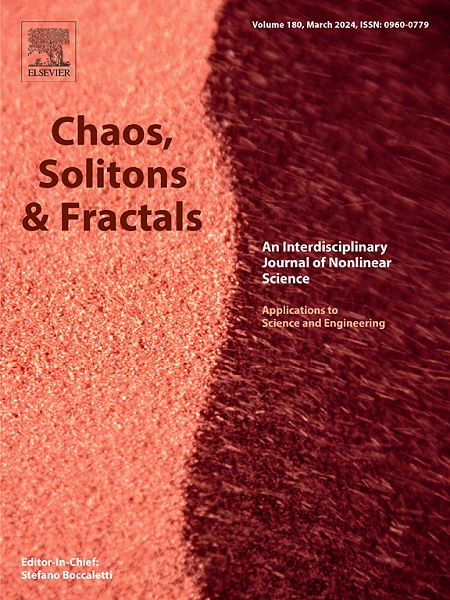Modeling social cohesion with coupled oscillators: Synchrony and fragmentation
IF 5.3
1区 数学
Q1 MATHEMATICS, INTERDISCIPLINARY APPLICATIONS
引用次数: 0
Abstract
Maintaining cohesion is a fundamental challenge in group-living species, where individuals must balance their own activity schedules with the demands of social interactions. In this paper, we model group dynamics using a network of semi-coupled oscillators to investigate how differences in activity schedules impact social cohesion and fragmentation. By introducing parameters for social “stickiness” (interaction strength) and activity synchronization, we simulate group behavior across varying conditions. Our findings reveal that, mathematically, cohesive groups can fragment when individual schedules diverge beyond critical thresholds, and that increasing social stickiness mitigates this effect. We explore these dynamics in the context of group size, subgroup formation, and coupling parameters, drawing parallels to network cohesion and fragmentation in human and artificial social systems. These results highlight the role of synchronization in maintaining stable social structures and suggest future avenues for empirical validation and application in broader social network contexts.
用耦合振荡器模拟社会凝聚力:同步性和分裂性
在群居物种中,保持凝聚力是一项基本挑战,个体必须平衡自己的活动计划和社会互动的需求。在本文中,我们使用半耦合振荡器网络来模拟群体动力学,以研究活动时间表的差异如何影响社会凝聚力和分裂。通过引入社会“粘性”(互动强度)和活动同步的参数,我们模拟了不同条件下的群体行为。我们的研究结果表明,从数学上讲,当个人时间表偏离临界阈值时,有凝聚力的群体会分裂,而增加的社会粘性会减轻这种影响。我们在群体规模、亚群体形成和耦合参数的背景下探讨了这些动态,并将其与人类和人工社会系统中的网络凝聚力和碎片化进行了类比。这些结果突出了同步在维持稳定社会结构中的作用,并为更广泛的社会网络背景下的实证验证和应用提出了未来的途径。
本文章由计算机程序翻译,如有差异,请以英文原文为准。
求助全文
约1分钟内获得全文
求助全文
来源期刊

Chaos Solitons & Fractals
物理-数学跨学科应用
CiteScore
13.20
自引率
10.30%
发文量
1087
审稿时长
9 months
期刊介绍:
Chaos, Solitons & Fractals strives to establish itself as a premier journal in the interdisciplinary realm of Nonlinear Science, Non-equilibrium, and Complex Phenomena. It welcomes submissions covering a broad spectrum of topics within this field, including dynamics, non-equilibrium processes in physics, chemistry, and geophysics, complex matter and networks, mathematical models, computational biology, applications to quantum and mesoscopic phenomena, fluctuations and random processes, self-organization, and social phenomena.
 求助内容:
求助内容: 应助结果提醒方式:
应助结果提醒方式:


